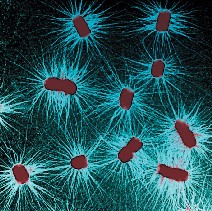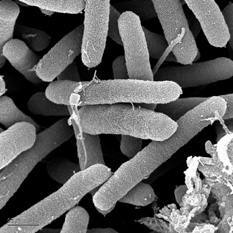Team:UQ-Australia/Project
From 2009.igem.org


Bioaccumulation (Mercury) Project
Project Outline
Water contamination is a key environmental issue for many countries around the world, both developed and developing. In Queensland, Australia we have a particular problem with Mercury (Hg2+) contamination of water supplies around the major mining town of Mt Isa, and also from Airforce bases. After searching through the iGEM projects from previous years, the arsenic detection system inspired us. As the UQ 09' team, we wish to take this idea one step further and completely remove the offending heavy metal from water systems.
To do this we will be utilizing a strain of Escherichia coli, with their already established mercury uptake, reduction and efflux system and making a few modifications. One of our aims is to couple the detection of Mercury to the expression of a native bacterial protein, Antigen 43 (AG43). This protein, when expressed, causes the bacteria to stick to one another. As the bacteria aggregate in clumps, they will fall to the bottom of the sample. Our idea is for the bacteria to take up the mercury, activating Ag43 expression, resulting in aggregation, and the Mercury-filled bacteria will fall to the bottom leaving clean water.
There are a number of parts that we hope to add to the registry. The first is Ag43 as a protein coding sequence and the MerR promoter sequence. We will also add the completed mercury uptake and aggregation system as an operon.
Project Background
Many bacteria carry heavy metal resistance systems, either encoded on a plasmid or within their genome. For example, the bacterium Cupriavidis metallidurans, first isolated from a sludge tank contaminated with high levels of heavy metals, contains genes which encode for reistance systems to Ag(I), Cd(II), Co(II), Cr(IV), Hg(II), Ni(II), Pb(II), and Zn(II) [1]. These systems commonly contain a metal transporter, a metal binding protein, a reduction mechanism, and a metal responsive promoter. In the case of Hg(II), the currently accepted general system is outlined below. [[File:{Figure_1.jpg}]]
References
[1] Monchy, S., Benotmane, M. A., Janssen, P., Vallaeys, T., Taghavi, S., van der Lelie, D. and Mergeay, M. (2007). Plasmids pMOL28 and pMOL30 of Cupriavidus metallidurans are specialized in the maximal viable response to heavy metals. J Bacteriol 189, 7417-25.
Bioprecipitation Project
Project Description
The arid climate of Australia has become notorious for causing widespread problems for agricultural industries. That is, the scarcity of water hinders the production of crops and livestock, as well as forcing restrictions of daily water usage for households. Team UQ Australia aims to solve this problem through the use of a bio-precipitation technique, thus increasing the availability of our most precious resource.
Pseudomonas syringae is a common bacterium, primarily found in colder climates (optimally at 22°C), and is well known for its biological ice nucleation properties, i.e. the formation of rain/snow. This bacteria expresses an ice nucleation protein on its outer membrane (InaZ). InaZ acts as a scaffold for the formation of the ice crystals, this directly assists in the formation of clouds and speeds up the rain cycle. However, the bacteria are unable to survive in environmental temperatures above 28°C. The ideal growing temperatures for syringae are 22°C - 26°C. By introducing heat shock proteins (DnaK, DnaJ, GroEL, and GroES) through plasmid insertion, UQ Australia aims to increase the optimal growth temperature available to P.syringae, thereby allowing bio-precipitation to occur in warmer (and drought stricken) climates. Although syringae already has this proteins encoded within the genome, they are not expressed at levels similar to bacteria which grow at higher temperatures.
The heat shock proteins form two systems. GroEL and GroES form one dimer which acts as a chaperon. Together these proteins assists in lowering the mis-folding of proteins. At higher temperatures proteins become unstable and mis-fold at a higher rate.
Ideally, UQ Australia will be contributing a number of parts to the registry. Firstly, a plasmid with DnaK, DnaJ, as well as an upstream promoter will drive the expression of these two genes. Secondly, an additional plasmid will carry the genes for GroEL and GroES, also complemented by an upstream promoter to drive gene expression.
 "
"


